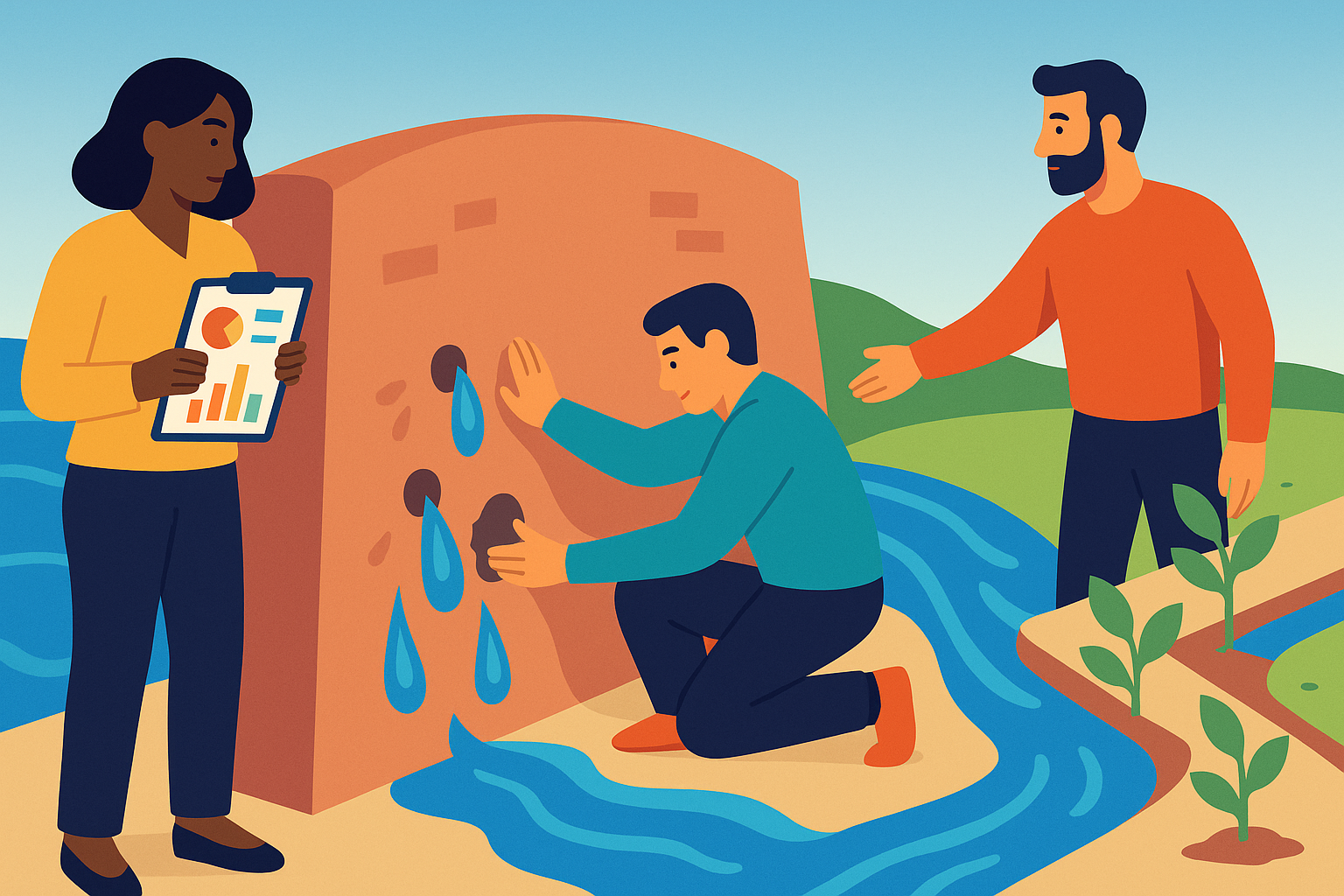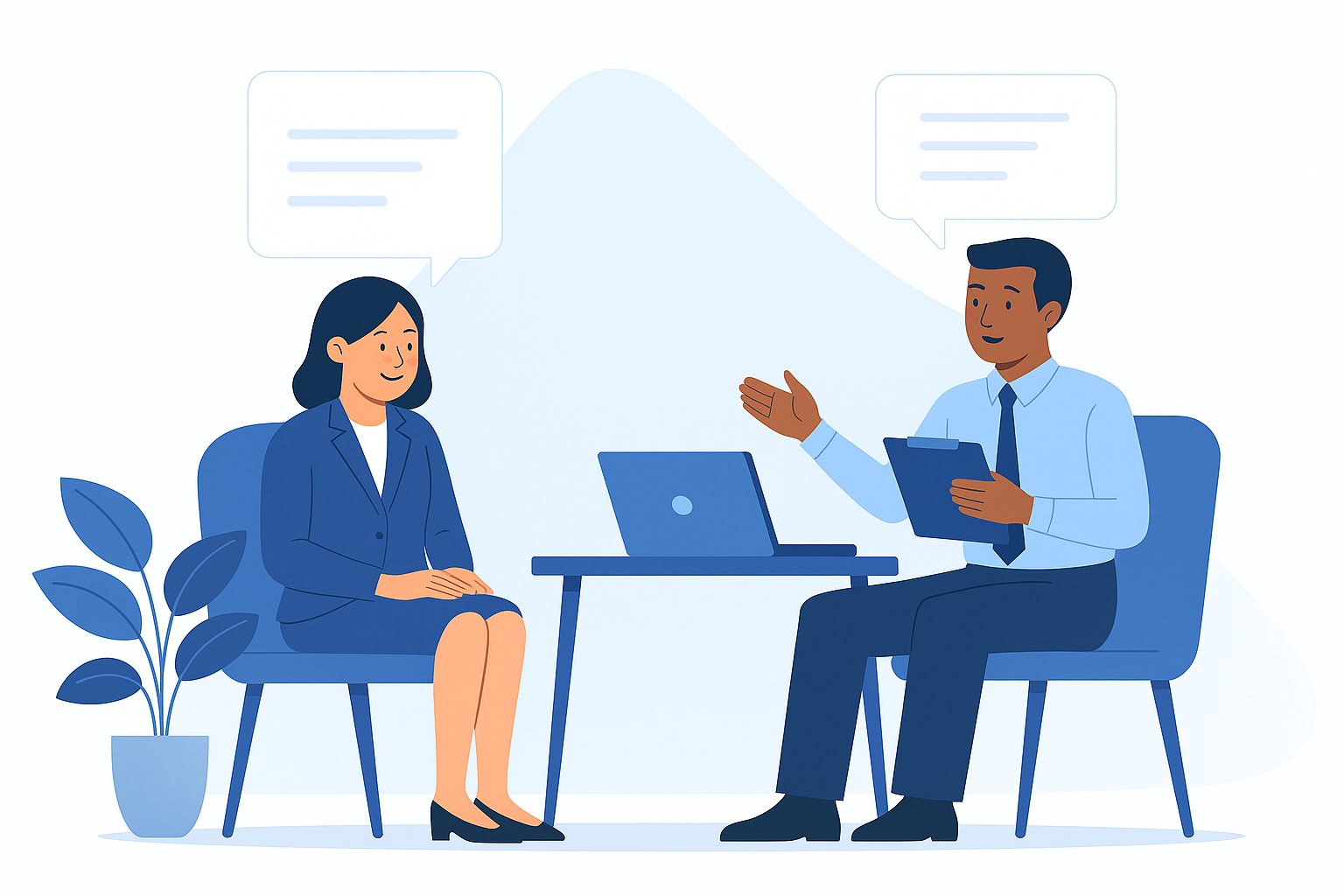Jesse was tasked by his executive team to find out why they’d been losing so many deals to a new competitor.
Over the next four weeks, he reached out to several closed-lost buyers and had what he felt were insightful, revealing conversations. He was excited to share his insights with the leadership group.
As he reviewed the conversations in preparation for his meeting, he felt a pit in his stomach.
His interviews lacked structure. He’d given the buyers too much freedom to dictate the flow of the conversation, and the result was that he’d captured some good quotes, but he didn’t have enough consistent data to identify any meaningful trends.
Jesse made a rookie mistake: He didn’t develop a guide to help him conduct a structured win-loss interview, which left him without any concrete insights to share with his leaders.
Just like a doctor relies on a checklist to help them diagnose and treat a specific disease based on the symptoms you share with them, it’s important for win-loss practitioners to approach win-loss interviews in a thoughtful, logical, and organized way so they can identify the true problems and weaknesses preventing them from winning more deals.
How to create an effective interview guide
In order to create an effective interview guide, it’s important to keep some basic guidelines in mind. Remember, these are flexible guidelines, not hard rules … kind of like the Pirate’s Code from Pirates of the Caribbean.

Jon Stevens, head of consulting at Clozd, suggests structuring your guide around core topics that you want to discuss. These topics will vary depending on your business or service, but may include marketing, sales, and product or service offerings.
Once you’ve chosen the core topics for your interview, the next step is developing several headline questions designed to extract as much information as possible.
Headline questions should be high-level and open-ended, allowing the interviewees to provide general feedback without too much guidance. As the conversation continues, you can narrow the focus with more specific questions.
Finally, be sure to include questions that invite feedback on specific product features or weaknesses. These optional drill-down questions can help identify whether these issues were material to the decision the buyer made.
Get buy-in from other leaders
Getting input from key stakeholders in different departments will help you get program buy-in and ensure you're asking the right questions.
When doing this, it’s important to set realistic expectations. You can’t ask every single question that every single leader suggests—but you can get a feel for the topics that are most important to them, and you can try to prioritize those topics during your conversations with buyers.
These topics can also inform how you categorize and report on your win-loss insights.
You might have one category for product feedback, where you store quotes about integrations, UI/UX feedback, and feature requests.
Another category might contain feedback on sales experience, where you categorize insights on demo quality, responsiveness, sales rep expertise, and more.
Consider creating questions for every category you want feedback around, as well as any sub-topics (or “Decision Drivers”) within each category.
Just remember that any feedback from internal stakeholders is secondary to the main topic you chose to center your win-loss project around in Lesson 1.
Keep your questions unbiased
The goal of your win-loss analysis interviews should be to get honest, candid feedback about your company’s strengths and weaknesses. The way you phrase your questions will impact your buyers’ ability to tell you what actually happened, so it’s important to ask unbiased, open-ended questions so you don’t taint your data.
Clozd program manager Lauren Beall shares a great example:
“You want to start really open-ended so you're not putting any assumptions in their mind about good or bad. You don't want to say, ‘What did the sales team do poorly?’ Instead, you could ask, ‘What was your interaction with the sales team like?’ If they say, ‘You know, Sales Rep B was just awful. I hated working with them,’ you can respond by saying something like, ‘Great, tell me what happened with Sales Rep B that didn't work for you.’”
The goal is to stay curious and open, which helps you get to the root of the issue so you can make improvements in the future.
Keep your interview guide efficient
If you’re organized, you can uncover a lot of information in 30 minutes. Asking for more time can lead to lower response rates, more no-shows, and an increase in incentive costs.
It’s easy to over-prepare for your first few interviews. A 20-page guide for a 30-minute interview is overkill. Also, keep in mind that the person you’re interviewing is setting aside valuable time to meet with you, and conducting an efficient interview shows that you respect their willingness to help.
“The buyers that jump on the call with you, this is not their full-time job,” Lauren said. “They're taking time out of their day to spend 30 minutes to give you insight on your business and how they made their decision. You coming prepared is a way to show that this is important to you and that you value their time. So, as you're preparing the interview guide, you get the opportunity to really sit and think on the question that you're trying to solve, and during the interview that allows you to be more adaptive and dynamic in your conversation while having a structured way to go about that.”
Here are two tips to make your guide more efficient:
- Prioritize what matters most. If the purpose of your interview is to learn more about their perspective on the user interface, don’t begin the interview by asking them about their experience with the sales rep or if they felt like the demo was personalized to them. Always start the interview by asking questions that relate to the most pressing issues.
- Don’t ask demographic questions unless they cannot be obtained any other way. Asking questions like how long they’ve been at the company, how long they’ve been in their role, or anything else you could easily find on LinkedIn is a waste of your time. Your win-loss interview is not a market research survey. Stick to open-ended questions that will give you data that no other tool or platform can provide.
Not all buyers are the same
Every business sells to different personas, so it’s important to adapt your interview guide to the person you’re speaking with. Even within a particular role, individuals will have unique perspectives and priorities. For example, if you're interviewing stakeholders for a purchasing decision, one may be focused on budget while another is more concerned with technical requirements.
The questions you ask should be based on who you’re speaking with and what’s important to them.
If you’re operating a win-loss analysis program, it’s important to develop strong active listening skills. You must also learn to adapt your approach to each individual interviewee in order to gather the most useful insights.
Don’t try to make your interview guide perfect
One of the biggest obstacles that people face when creating an interview guide is the pressure to make it perfect.
Perfection is the enemy!
Your interview guide is a living document that will evolve as your priorities shift and as you become more familiar with your buyers’ needs and desires. Make continuous adjustments to your guide as necessary based on what you learn from each interview.
If you’re doing this for the first time, be patient with yourself. Interviewing is a skill, and the only way to improve is to actually conduct lots of interviews.
As long as you follow the best practices we’ve outlined here, you won’t end up with lots of data but no trends—like Jesse at the beginning of this article.
This article is the second in a six-part series to help you launch your first win-loss analysis project—so you can experience the value of getting feedback directly from your buyers. Click below to check out the rest of the series.
For a personalized Clozd demo, sign up here.











.svg)











.svg)

.svg)




